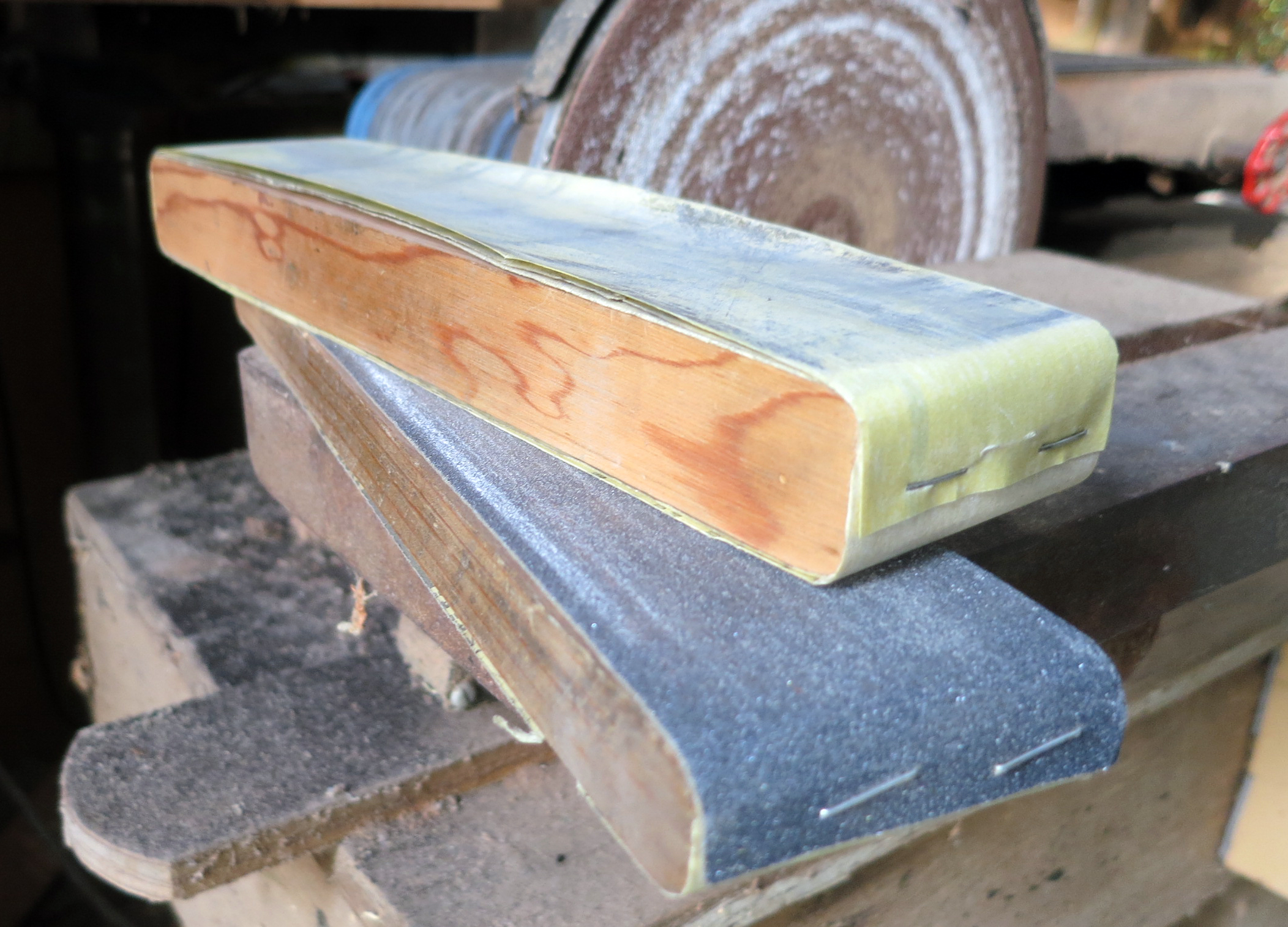Hey all. I have been seeing crowning scratches towards the tops of my frets after dressing. I usually go 320, 400, 600, 0000 Steel Wool. Is there something I might be doing wrong when using the Stew Mac #300 offset diamond file? I have been going back to chase them but it just seems like a terrible use of time if I can just change something while I am working I would rather do that.
Views: 966
Replies to This Discussion
-
So, does the #300 crowning file have a 150 side? Or is the whole thing 300? I feel like this is a silly question..... When you guys use you finger with sander paper are you ONLY hitting the sides of the frets and avoiding the tops so they stay level or does it matter? I have these rubber diamond shaped sanding blocks that I use with adhesive sandpaper w/ the grain of the fingerboard. Rusty, how come you go to Micromesh right after the diamond file? does it make the rest go easy?
-
I'm talking about the stew mac off set diamond files. Each file has 2 sides: one for jumbo frets and another for medium frets. One file is 150 grit on both sides, the other file is 300 grit on both sides:
http://www.stewmac.com/shop/Fretting_supplies/Shaping_and_crowning/...
The photos I referenced earlier, pics 10 and 11 show how I use the card stock wrapped with one layer of sandpaper to sand the sides of the frets (going with the grain of the fretboard). The sandpaper wrapped around my finger hits the top of the frets but won't take out the file marks from the sides of the frets. If each sanding stroke hits every fret, it is not going to have an effect on the levelness of the frets. At least not to any tolerances that matter for fretwork. This is especially the case if you start with a relatively fine grit like 600.
http://fingerlakesguitarrepair.com/fender-strat-level-frets-and-set...
-
Hi David,
The Diamond files we use are the Stewmac jobs - come in the one grit size (150 or 300) and have wide and narrow grooves for different fret sizes on each side. There are other versions available but the Stewmac ones work fine and last well.
The whole fret is polished, the tops are pretty much where you want them after crowning and checking and if each fret top is polished with the same action and number of strokes any removal of material by the abrasive process will remove much the same amount. I personally don't pay too much attention to the sides of the fret if they are new as they are finished when you get em - just take the tops down to level and use the micromesh schedule to bring them to a gloss.
The reason I use the micromesh sticks is in a previous post on this thread - it saves my knuckles - plus we buy them in bulk from a distributor and they work out cheap - they also are conformal so they wrap around the fret top and with a bit of rocking on the push pull stroke they do the sides as well for a consistent top finish. They also go to a very wide grit range from 160 to 12000 odd. R.
-
Makes a lot of sense. Thanks Rusty!
-
I use a standard jeweler's sanding block which holds a 2-3" wide strip of abrasive paper. Here are a couple:
Usually 400 is all I need, and here's the trick: when I know I have 100% levellity where it's needed, and the crowning is done, I lightly work the blocks side to side—not with the grain of the board, but at exactly 90 degrees to that, along the frets themselves. This takes out all the fine scratches. You can go right over the ends of the frets to the binding.
After that, you hit it all with 0000 steel wool, which is approximately the same as 600-grit paper, and in most cases that's it. The simple act of playing briefly on a fret with that degree of surface refinement burnishes the fret. You don't hear or feel any roughness. If you want to keep going, it's for cosmetics, not for playability. You play the surface of the crown of the fret, not the sides.
- ‹ Previous
- 1
- 2
- Next ›
© 2025 Created by Frank Ford.
Powered by
![]()
